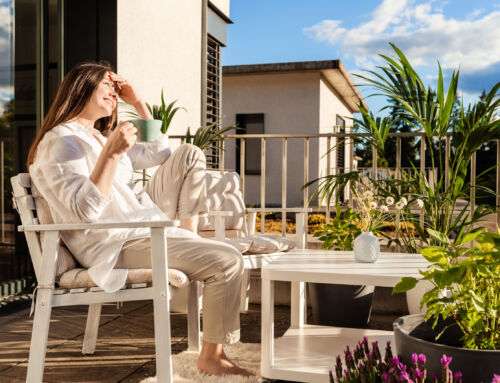Here in Canada, we’re no strangers to cold winter weather. Snowstorms, blowing winds, and sub-zero temperatures are expected and can sometimes last for up to six months of the year in some regions. While the weather doesn’t usually slow us down, when the temperature suddenly dips in a matter of hours, you need to be prepared for anything.
Winterizing your home for a cold snap, also known as a ‘cold wave’ or ‘cold spell,’ is a crucial step to keep your home operating smoothly when the weather suddenly dips to freezing temperatures. Don’t be left out in the cold with our top tips to prepare for a cold snap.
Turn up the heat
Ensure your furnace is switched to “on” and not “auto,” and increase your indoor temperature to a comfortable level to keep out the chill and to ensure the water in your pipes and toilet bowls don’t freeze. Poorly insulated water pipelines and indoor plumbing could rupture as the water expands within them, causing damage to your property and leaving you with costly repairs. And, keep the cold out by regularly inspecting weatherstripping on your doors and windows to ensure you have a proper seal.
Safety first
Test your smoke alarms and carbon monoxide detectors to make sure they’re working. We recommend having both wired-in and battery models to protect your family in the event of a power outage. It’s also a good idea to have backup heat, power and food sources. Consider building an emergency kit with flashlights, candles and matches, blankets and shelf-stable food and bottled water if you lose power or water or become snowed in.
Lower your humidity
Take preventative steps to avoid excess humidity, including lowering your humidifier to 20 – 25%. You should run your bathroom fans for up to 60 minutes after a shower or bath, and make sure your kitchen hood fan is on while cooking to draw out any excess moisture. Excess indoor humidity could cause damage to your window and door frames, flooring and could cause attic rain.
Get outside
Before the cold weather hits, it’s crucial to drain and turn off your external water supply (hose bibs). It’s also a good idea to make sure your exterior vents and intake valves are clear of debris and build up. When the cold snap is over, it’s always a good idea to walk around the exterior of your home and do a visual inspection. Keep an eye out for ice damming or damaged flashing and be sure to address any damage right away.







Our new triple pane windows have condensation forming at -16c, and ice builds up in the lower corners at -20 and colder. Our indoor humidity is at 26% and very dry. We run the circulating furnace/exhaust fan from morning to evening. The glass is cold to touch. We are concerned when the weather warms, the ice turns to water and disappears. The builder suggests to keep the fan running 24 hours, but we find that suggestion ridiculous. What can we do?
Thank you
During cold snaps, the lower the outdoor temperature the less humidity is required in the indoor air to condense on cold surfaces. This is the dew point in which the humidity in air in your home will condense on cold surfaces such as window glass. Although triple pane insulated glass units have a better R-Value than dual pane IG units, they are only a fraction of what the wall insulation value is and susceptible to condensation and frost under the right conditions. Continue to keep your home around 25% RH or lower to minimize the amount of condensation on your windows. The Primary ventilation fan is designed and should be operated full time during cold snaps and when the humidity in your home is high. This is its primary role and accurate information provided by your builder. Consider it as an “anti – condensation” fan.
Hello, have the same issue as Mike. Before the cold days even started I turned off the humidifier and turned on the vent. When the cold snap hit there was so much ice on the windows and on our back door so much condensation the water is actually leaking. Contacted builder to come and inspect it but they only gave me the tips to reduce the humidity which is not working. The paint is already pealing off from some windows. I lived in a house before but was always able to manage the humidity issue with turning off the humidifier and having a vent on, but not in the new house. Not sure what else to do.
Hi Slavica – Because all homes and all systems are slightly different, it is difficult to answer your question at this moment. We recommend you reach our to our team ([email protected]) with a detailed description of what is happening (include photos and your home address) so they can help advise you of next steps.